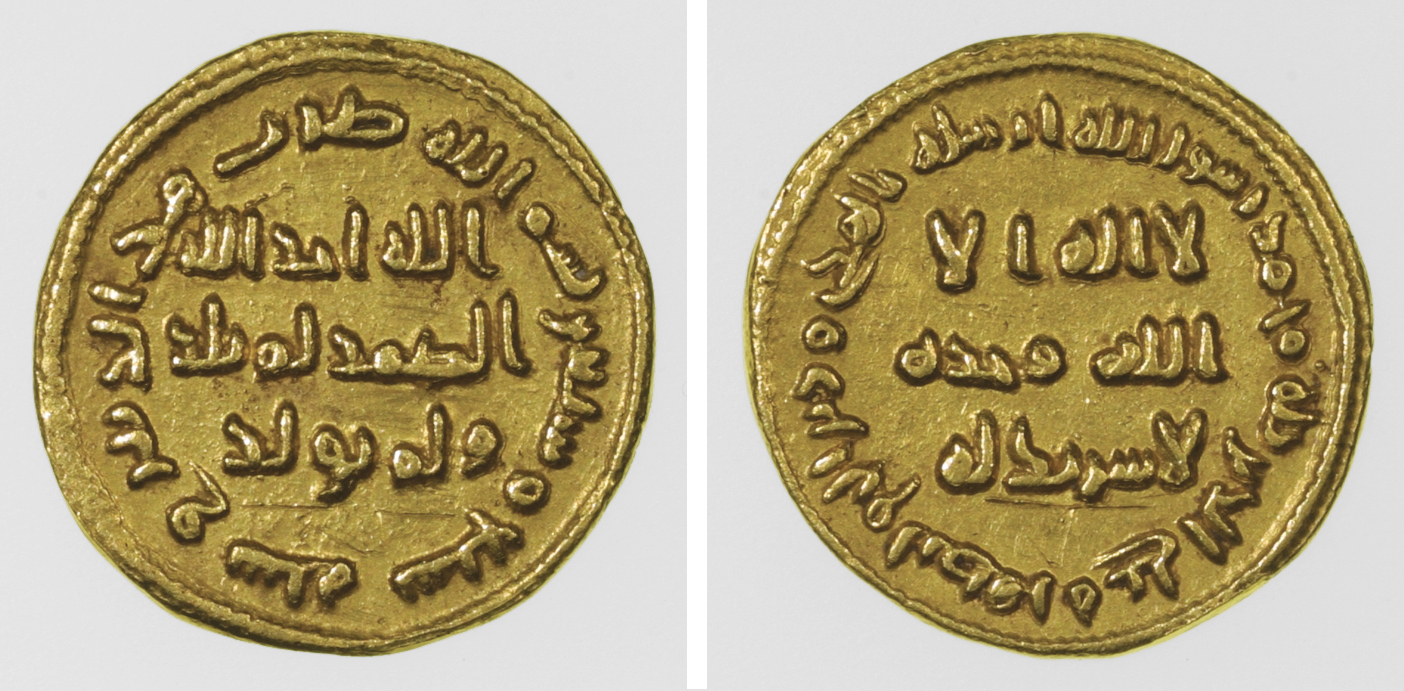By the late 7th century, the Byzantine Solidus was still the dominant gold currency in the Mediterranean, but a new economic power was emerging—the Islamic Caliphate. Under the rule of Caliph Abd al-Malik (r. 685–705 CE) of the Umayyad Dynasty, the Islamic world sought to establish its own independent monetary system, free from reliance on Byzantine and Persian coinage. This led to the creation of the gold dinar in 696 CE, marking a turning point in global economic history.
For decades, early Islamic economies had used Byzantine and Sassanian coins, often modifying them with Arabic inscriptions. However, as the Caliphate expanded across the Middle East, North Africa, and Spain, Abd al-Malik recognized the need for a uniquely Islamic gold currency to unify trade, taxation, and governance.

The Gold Dinar: A New Standard (696 CE)
In 696 CE, Abd al-Malik introduced the first purely Islamic gold coin, known as the Dinar. This coin set a new gold standard that would influence economies for centuries.
Key Features of the Islamic Gold Dinar:
- Weight & Purity – Modeled after the Byzantine Solidus, the dinar weighed 4.25 grams of pure gold.
- Religious Inscription – Unlike Byzantine coins, which featured emperors, the dinar bore no human images. Instead, it featured Islamic calligraphy with verses from the Qur’an, emphasizing the Islamic faith.
- Official State Currency – The dinar became the sole gold coin of the Islamic Caliphate, replacing Byzantine coins in trade.
The introduction of the dinar created a stable and unified gold-based economy, strengthening Islamic financial independence.
The Impact of the Gold Dinar on Global Trade
The Islamic Gold Dinar quickly became one of the most important coins in the medieval world. It facilitated trade across:
- The Middle East & North Africa – The dinar replaced Byzantine and Persian coins, consolidating Islamic economic power.
- Europe & the Mediterranean – Christian merchants often used dinars in trade with the Islamic world.
- The Silk Road & India – The dinar circulated as far as China and India, proving its influence in global commerce.
Under the Abbasid Caliphate (750–1258 CE), the dinar continued to thrive, influencing later European gold coins like the Florin (1252 CE) and Ducat (1284 CE).
Conclusion: A Lasting Monetary Legacy
The introduction of the gold dinar in 696 CE marked the rise of a powerful, gold-backed Islamic economy that endured for centuries. By replacing Byzantine coinage with an independent Islamic gold standard, Abd al-Malik laid the foundation for a strong, unified economic system that influenced both the medieval and modern world.
